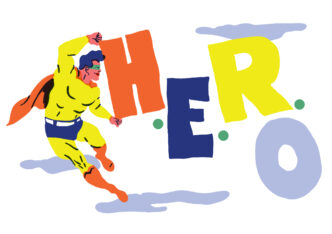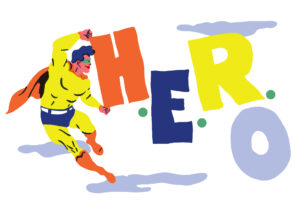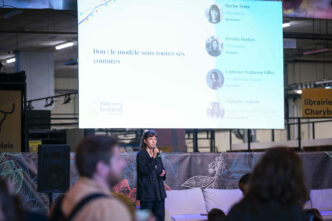

This article was originally published in the RQ1 newsletter, republished with the kind permission of Mark Coddington and Seth Lewis — two former journalists turned academics, now teaching and researching at Washington and Lee University (Mark) and the University of Oregon (Seth).
Exploring the experience of paying for online news
With the ongoing shift from free news sites to ones that require subscription for access, researchers have raised questions about the downstream effects on news knowledge — on basic understanding of key facts about public affairs. In a world of paywalls, as one study asked, “how can journalism provide quality news for everyone?”
Put another way: as more and more people “bounce off” paywalls, reading less and less local news especially, what happens to overall public understanding and citizen know-how? This question seems particularly pertinent for young people who are presumed to have less interest in news and less willingness to pay for it — and thus less likely to develop news-subscribing habits that will follow them (and their dependents) over time.
While previous studies have looked at many aspects of people’s willingness to pay, they haven’t drilled down on the qualitative experience of subscription-based news, especially for young adult non-subscribing news users. Marianne Borchgrevink-Brækhus and Hallvard Moe, both representing MediaFutures in the Department of Information Science and Media Studies at Norway’s University of Bergen, attempt to do just that in their new paper in Journalism Studies, “The burden of subscribing: How young people experience digital news subscriptions.”
The researchers recruited 15 participants (nine of whom had never paid for or subscribed to online news), all between the ages of 26-30. That may sound like a small number of research participants, but when qualitative and overlapping methods are involved — as they were in this case — then sufficient “data saturation,” or the point at which responses and themes become redundant, can be achieved even with a relatively small set of respondents.
The research was conducted in Norway, which, the article argues, “makes an interesting case context for studying experiences with paid content, as it is considered the world’s most mature market for subscription-based online news.” So, if younger adults are turned off by subscriptions in Norway, we can presume they would be even more so elsewhere. In this study, the researchers deployed a package of three methods: interviews (two rounds), media diaries (where participants journaled about their experiences with news), and a test subscription period of one month (for a Norwegian online newspaper of their choice).
The researchers were not just concerned about people’s willingness to pay for news, as has been common in previous studies. On the contrary, they focused just as much on people’s “life situations and the role of media in their everyday life,” mapping “news and media habits, interests, and preferred news sources,” all in conversation with feelings about media subscriptions in general and how people move between free and paid content in the day-to-day.
Experiences with subscription-based news
The researchers found that study participants’ experiences with subscription-based news needed to be contextualized in three ways:
First, interviews and media diaries showed that people actively looked for news on a regular basis (from a couple of times per week to several times per day), and that over time they had gravitated to free options (such as podcasts, TV, radio, and free national news sites) as more online news organizations began charging for content.
Second, many participants talked about regularly checking sites that had subscriptions (from their local newspaper to The New York Times), and that even if they lacked access because they didn’t pay for it, they had workaround strategies: e.g., borrowing a login, reading social media comments to get the gist of an article, or relying on family and friends. Key here is that “such strategies were mobilized for specific stories or issues, not as a general habit.” But still: that people would go to such lengths to get access to a paywalled story of interest suggests that, “far from being ‘avoiders,’ non-subscribers can be both willing and interested in orienting themselves toward the public through news.”
The third contextual point is that the researchers did not find any connection between people not paying for news and an overall opposition toward the idea of paywalls for news. “On the contrary, informants expressed awareness of declining advertising revenues and decreasing print readership, and recognized news providers’ need to charge for content.” That said, study participants were frustrated that certain types of news — particularly news they saw as vital for everyone to see, such as stories about Covid-19, accidents, or elections — were not freely accessible for non-subscribers.
Why young people don’t pay for news
So, against that contextual backdrop, researchers discovered three key types experiences with subscription news that helped explain why these individuals did not pay.
The first experience was lack of exclusivity, including the feeling that similar content could be found elsewhere for free. But this dimension also included a curious twist: “news content should not appear too exclusive, in the sense of narrow. Stories only covered on one news site, typically in a local or regional one, were valued as less important or even unnecessary by the informants: they felt less obligated to read about it and refrained from paying.” Interestingly, too, “after their subscription period ended, many struggled to distinguish between what kind of content required payment or not.” That’s not a great sign for the distinctiveness of paid-for news content.
The second experience: subscriptions are too time-consuming. In this case, rather than seeing their one-month test subscription as a replacement for their previous workarounds for accessing paywalled content, many of the study participants used the subscription primarily as an add-on to existing news habits — thus making the experience of keeping up with their subscriptions feel like “a draining chore.”
The third type of experience was unattractive pay models, which is perhaps no surprise to anyone who has experienced the frustration of trying to start and stop online news subscriptions. Just as the study participants felt “tied down” by the subscriptions in terms of time, they also felt too tightly bound to them financially as well — and described this reluctance to commit to a single news source in the wider context of subscription fatigue of so many choices and requirements across sites: of needing to manage too many registrations, logins, passwords, etc.
> To add to your reading list: Why people don’t pay for news: findings from a study and key takeaways
Conclusions
Indeed, as the authors note in their conclusion: “An overall observation based on our analysis is that these young non-subscribers expressed a strong preference for ‘multi-perspectivism’ in their news use. They included a myriad of both national and international sources, they were tech-savvy and knew how to maneuver around payment models in search of information, and were pragmatic but not naïve when searching for accessible information. A key overarching preference was the freedom of not being tied to a subscription. As such, it seemed unthinkable to ‘commit’ to one or two providers. Subscriptions were rather experienced as supplementary and restrictive burdens to their already existing news repertoires.”
So, does the increase in paywalls suggest that people are becoming less informed? While it’s far beyond the scope of this single paper to answer that big question, this Norwegian study would suggest that non-subscribers can develop strategic workarounds to keep up with the news — and that the experience of subscriptions can be a burdensome turn-off in its own right, for reasons that deserve further study.
Find more content from Mark and Seth, and sign up to the RQ1 newsletter here.












